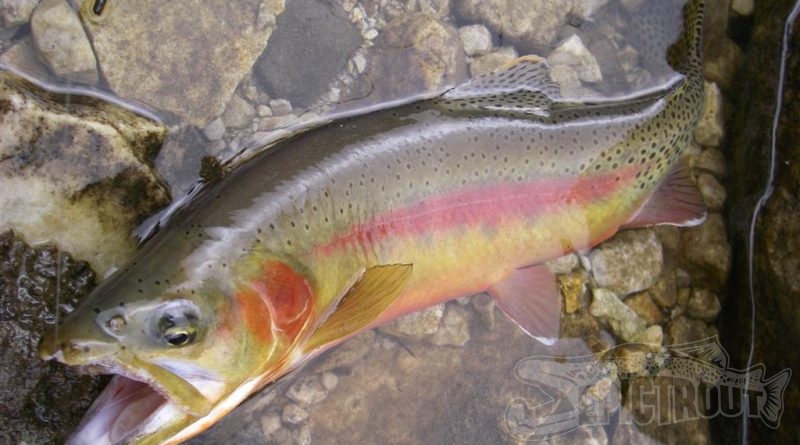
In the high-altitude streams of the upper Kern Basin, spawning occurs after runoff has subsided and water temperatures have warmed up to above 50° F (10° C), which ranges from mid-May through July depending on the altitude (Knapp and Vredenburg 1996). California Golden Trout typically spawn for the first time at age-3 to age-4 and like other the subspecies of Rainbow Trout are spring spawning fish (Stefferud 1993). Golden Trout prefer undercut banks or areas with sedge, although they also utilize several other types of habitat such as pools and runs as well. The typical size of the home range for adult Golden Trout is generally 55 to 165 ft (17 to 50 m) of stream habitat, although ranges of up 1,800 ft (549 m) have been observed (Matthews 1996).

The habitat available within the native range of the California Golden Trout consists of small high-altitude streams, and as such these fish only exhibit a stream resident life history type. The hatchery broodstock used for stocking Golden Trout outside their native range is slightly hybridized with hatchery Rainbow Trout, but still predominately retains the appearance of the Golden Trout (Behnke 2002). Due to its beauty and popularity with anglers the California Golden Trout has been widely stocked outside of its native range, especially in the high lakes of the Sierra Nevada and Rocky Mountain Ranges. However, as it appears that interbreeding between Rainbow Trout and Golden Trout resulted in the Kern River Rainbow Trout (Moyle 2002), this assumption does not appear to be valid.
#GOLDEN TROUT FULL#
Recently, the American Fisheries Society considered Golden Trout a full species Oncorhynchus aguabonita, reasoning that they do not naturally mix with Rainbow Trout across their native range (Moyle et al. Early classifications considered them Cutthroat, although it became apparent that they fall in the Rainbow Trout lineage (Behnke 2002). The classification of California Golden Trout has been in debate since their discovery. The fish in Golden Trout Creek have a brighter coloration and originally, they were considered a distinct subspecies Salmo aguabonita roosevelti (Evermann 1905), however genetics and meristic characters do not support this classification (Moyle 2002). These fish are native to the South Fork of the Kern River and Golden Trout Creek in the southern Sierra-Nevada Mountains of California and historically occupied approximately 450 miles (725 km) of stream habitat (Trout Unlimited 2007).

The California Golden Trout is often considered the most beautiful of the salmonids. A California Golden Trout from a small high Sierra stream Introduction


 0 kommentar(er)
0 kommentar(er)
